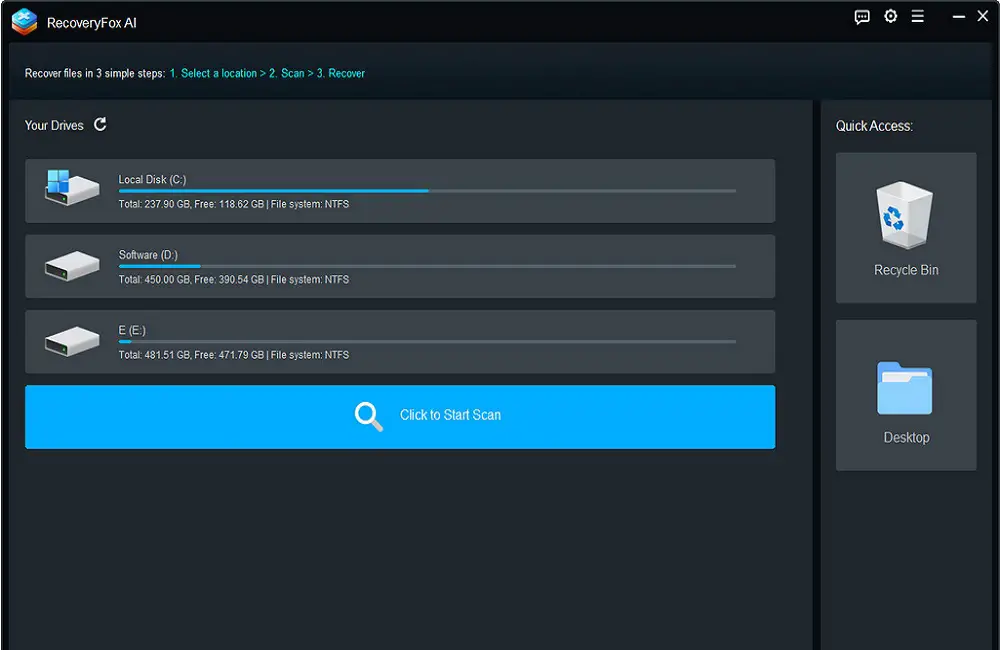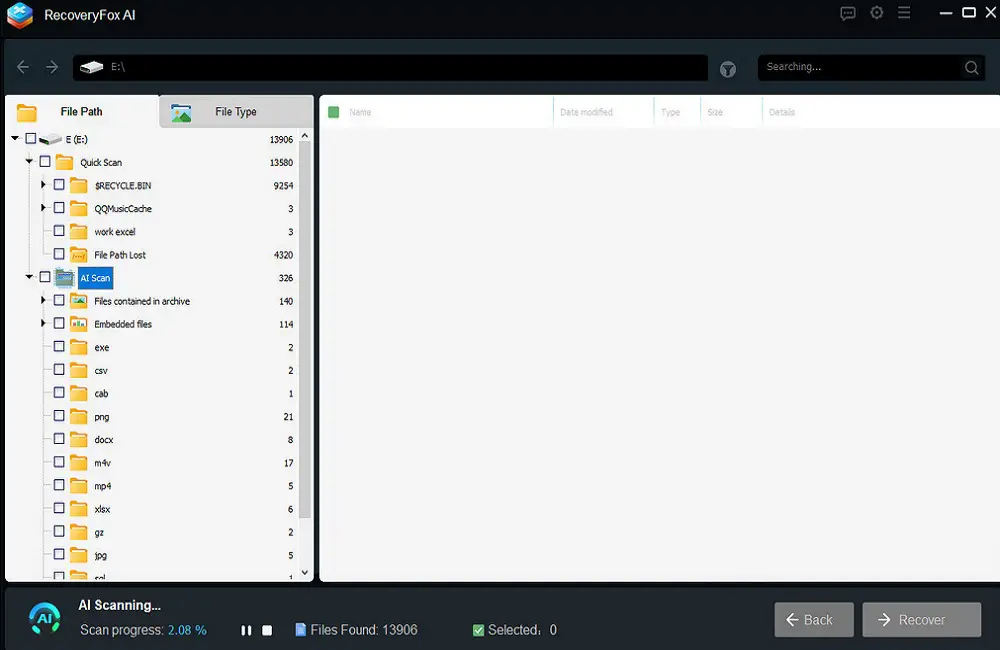Have you ever accidentally formatted a drive and then felt your nerves instantly tense up? That split-second realization — “Wait, did I just erase everything?”—followed by panic, regret, and a desperate Google search for solutions. Whether it’s years of family photos, critical work documents, or creative projects, losing data to accidental formatting can feel like a digital nightmare. But here’s the good news: as long as you stop using the device immediately, it is very likely to recover deleted data from a formatted external hard drive.
In this guide, we’ll will show you how to do this magic in 4 simple steps and guide you on what you should do properly before data recovery and how to prevent data loss from happening again.

What Should You Do When the Drive is Formatted?
There are many reasons to format a hard drive, but no matter what your reason is, you should do the following to increase the chances of data recovery:
- Stop using the drive immediately.
Continuing to use it will cause more new data to be written and the original file to be overwritten, making data recovery more difficult.
- Check device backups
When you format a hard drive, the operating system simply loses the ability to refer to the data on the disk. But the files and data are still there, the operating system just can’t access them. The only thing formatting does is eliminate the pointers that tell the operating system where the files are physically located. You can successfully access your data again now, if you can recover those pointers.
- Find A Reliable Option for Formatted Data Recovery
It can be even more stressful when your hard disk is formatted without a backup. But don’t worry, even without a backup, there are still ways to recover data from your hard disk If you choose the right software tool and start the recovery process before the new data is stored on the formatted hard disk, you may be able to recover all formatted partitions and the files in them. There are numerous data recovery software tools on the market today, RecoveryFox AI is a reliable choice for recovering formatted data from a hard disk, you can try this tool to see what it can do for you.
How to Recover Data from a Formatted Drive with RecoveryFox AI?
As a tech novice the last thing you want to face when trying to recover data is a complicated process that can be stressful. RecoveryFox AI provides a user-friendly interface to help users easily recover lost data from formatted hard disks. Unlike traditional tools that rely on basic file signatures, its artificial intelligence engine scans for fragmented data patterns, intelligently rebuilds files, and delivers industry-leading recovery rates (up to 98%).
Follow the steps below to recover your lost data from formatted hard drive.
Step-1: Download RecoveryFox AI from the official website and install it on your Windows, be sure not to download it to the affected hard disk to avoid your files being overwritten and reduce the possibility of data recovery.
Step-2: While connecting the formatted hard disk to your computer, launch RecoveryFox AI and select that target disk.

Step-3: After you select the disk, RecoveryFox AI will start the “Quick Scan” mode and then automatically enter the “AI Scan” to find deeply hidden or deleted data. The “AI Scan” can be paused or stopped at any time.

Step-4: Pick the target file to preview it and click on the “Recover” button to restore it to a different disk than the affected one.

Why Choose RecoveryFox AI?
- Beginner-Friendly Interface
Clean design with guided workflows ensures even novices can navigate the process even without step-by-step tutorials.
- Fast & Comprehensive Scanning
Recovers 100+ file types—photos, videos, documents, PDFs, emails, audio files and so much more.
- Cross-Device Compatibility
Restores data from HDDs, SSDs, USB drives, SD/TF cards, cameras, and more.
- AI-Powered File Reconstruction
The AI-powered scanning mode can deeply identify scattered data fragments and reconstruct them into complete and usable files.
- 98% Recovery Rate
Recover data from formatted drive with faster, safer restoration.
- Pre-Recovery File Preview
Preview photos, documents, or videos to confirm their integrity.
- Smart Filters for Quick Search
Sort results by type, date, or size to pinpoint files instantly.
- Full File System Support
Works seamlessly with NTFS, exFAT, and FAT32 formats.
Pros and Cons of RecoveryFox AI
Pros:
- AI-driven scanning ensures minimal data loss.
- Intuitive interface for all skill levels.
- Works with internal/external drives and multiple file systems.
- Free preview files before recovery.
Cons:
- Desktop-only for now.
Frequently Asked Questions (FAQs)
1) Can I recover data after formatting a drive twice?
Yes, but act quickly! Avoid overwriting the drive. RecoveryFox AI’s AI Scan can still locate residual data.
2) Does formatting permanently erase data?
No—formatting only deletes file tables. The data remains until overwritten.
3) How long does a full scan take?
Depends on drive size and file volume.
4) Is RecoveryFox AI safe to use?
Yes. It operates in read-only mode, ensuring no further damage to your drive.
5) Is it possible to recover data from formatted hard drive without installing any software?
Recovering data from formatted hard disk without using software is challenging. Windows users can try to recover data from formatted drive using File History.
Read also: How to Recover Deleted Files from iPhone Easily with FoneTool
Conclusion
Sometimes, formatting is the fastest and most direct way to solve various file system problems. However, this process will completely empty your hard disk. If you know how to recover files from a formatted hard disk, you can not only fix file system problems, but also recover any files lost in the process. In this article we have explained how to recover data from a formatted hard disk, now it’s up to you to make the most of your new skills.
The last thing you have to be reminded of is that although there are many means of data recovery available, it doesn’t mean that daily backups are not necessary, and getting into the habit of backing up your data on a regular basis is a good idea at all times.
